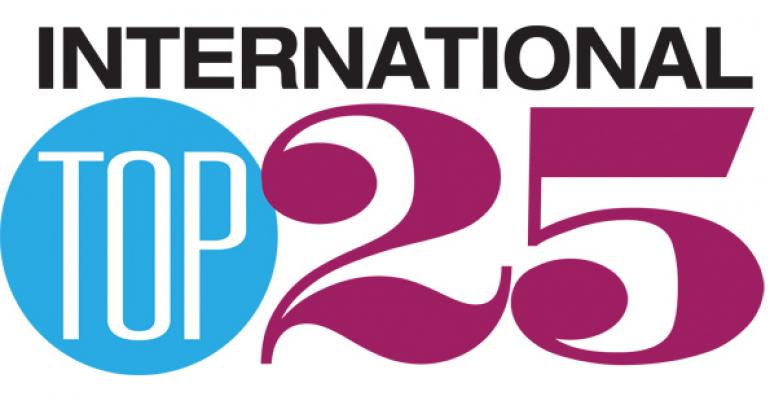Data
• Chains by sales, growth
• Chains by worldwide units, growth
• Companies by sales, growth
• Chains by estimated sales per unit
Russian chains account for four of the top five foodservice operators in Eastern Europe, reflecting both the size of the Russian market and the continued evolution of chained foodservice there. Despite that, the dining market overall remains significantly underdeveloped in Eastern Europe compared with other markets and regions of similar income levels.
The lack of a well-developed service industry during the communist period had a lasting impact in many markets of the region, with mid-tier dining options particularly limited. While very low-priced, utilitarian cafeterias can be found in even the smallest towns, there is still a dearth of more upscale, yet affordable options even in many large cities.
In 2013, total spending on eating out for the entire region was just under $62 billion, two-thirds that found in Brazil alone, a market with a roughly comparable population. The lack of a well-developed independent sector means chains already account for more than 20 percent of total spending on foodservice, far higher than Latin America, and comparable to several markets in Western Europe.

In contrast to regions like Asia-Pacific or Latin America, where newcomers to the region must compete with a plethora of affordable local options, chain operators in Eastern Europe are often leading the development of the restaurant industry in terms of both consumer education and foodservice operations expertise. Chains also have considerable freedom in terms of concept development, particularly in menu expansion and new service models. A good example of this is in the leading regional chain, Russian coffee shop concept Shokoladnitsa. As much a restaurant as a coffee shop, Shokoladnitsa combines a wide array of coffee drinks and other beverages with an equally large food menu, serving as a destination for eating as well as drinking with strong average checks to match. While a focused brand identity is as valuable in Eastern Europe, as it is elsewhere, the fact that consumers in many areas remain underserved by foodservice means a much wider variety of occasions are in play for operators with the right offer.

For much of the last 20 years, those occasions have primarily been served by foreign operators, with McDonald’s outlets in Russia in particular consistently posting some of the highest average sales per unit in the entire McDonald’s system, while in Poland, AmRest Holdings SE has become a major regional player through a powerful combination of licensed brands, including Pizza Hut, Burger King, Starbucks, and Applebee’s. In recent years, however, local brands have steadily gained ground, often through a consciously low-cost strategy. While Shokoladnitsa and its competitor Coffee House are both comparatively upscale, coffee-led concepts, the remaining players in the top five all rely on focused, even basic concepts—Hungary-based bakery chain Fornetti KFT operates thousands of outlets across the region through a very low-cost franchising model, while Russian chains Teremok and Kroshka-Kartoshka round out the top five with concepts centered on traditional Russian blini (crepes) and baked potatoes, respectively.
In the near-term, further development of this type of focused, low cost presentation is likely to continue among local players—already in Russia, some of the fastest-growing local chain concepts include 33 Pingvina (33 Penguins), an affordable ice cream shop, and Killfish Discount Bar, a no-frills bar concept. Yet evolution continues at the mid-tier and high-end as well—AmRest, for instance, continues to forge ahead with its La Tagliatella casual Italian concept, purchased in 2011. Similarly, Costa Coffee has made expansion in Poland a priority with the purchase of local player Coffeeheaven, with all new outlets in Poland now operated under the “Costa by Coffeeheaven” banner.

